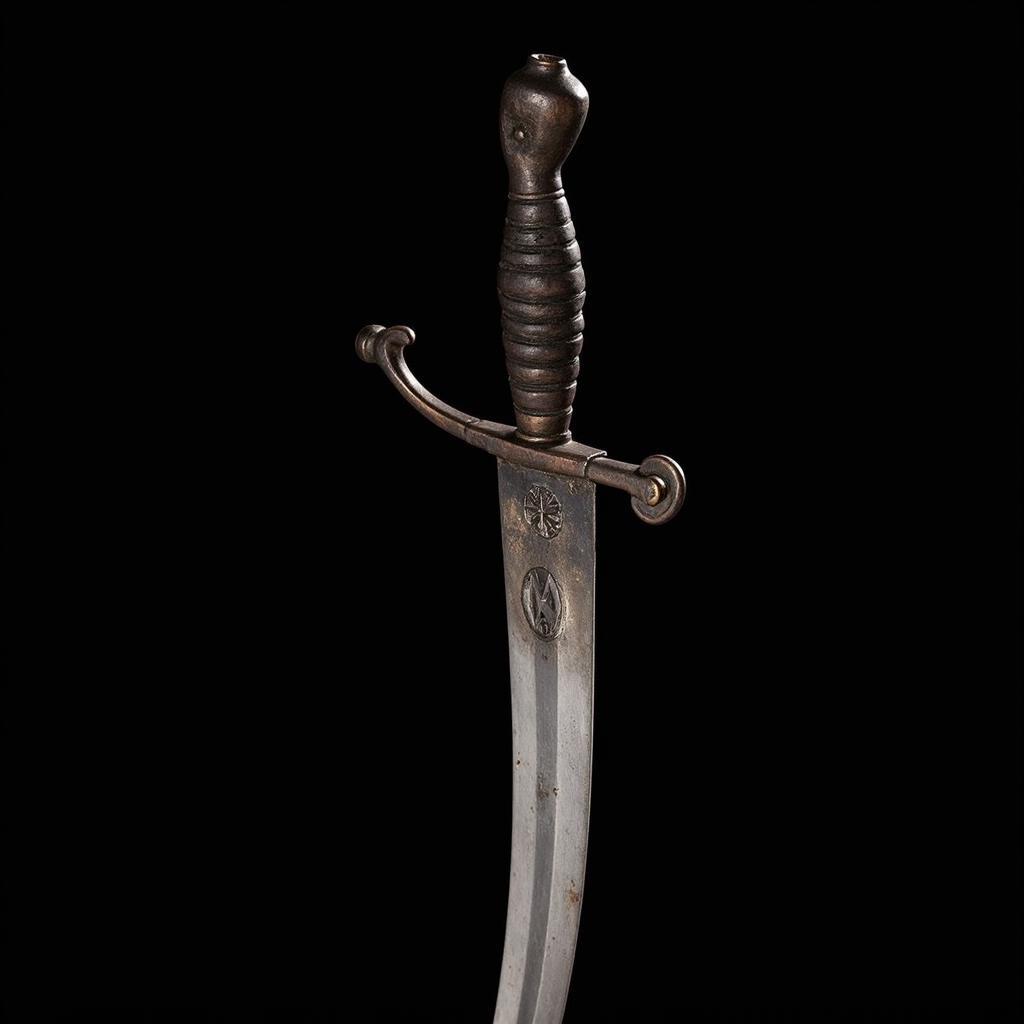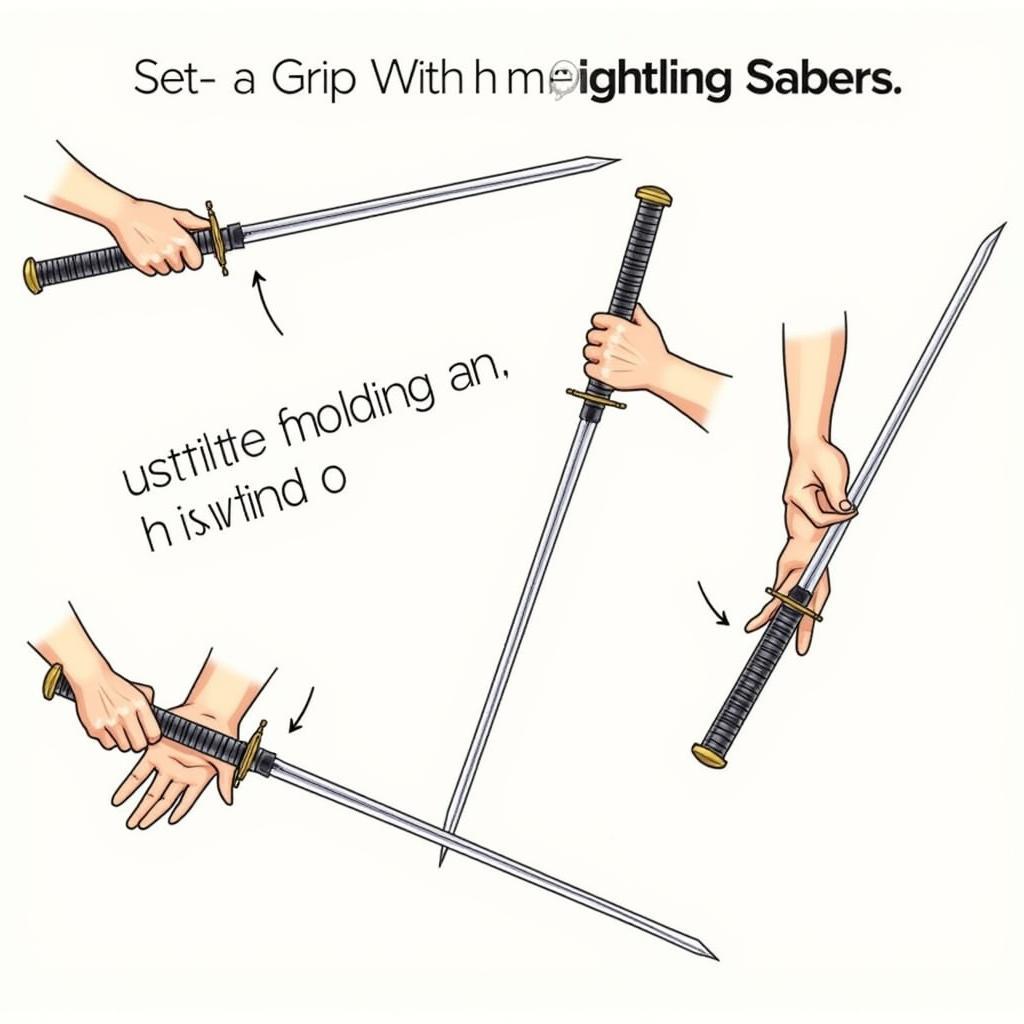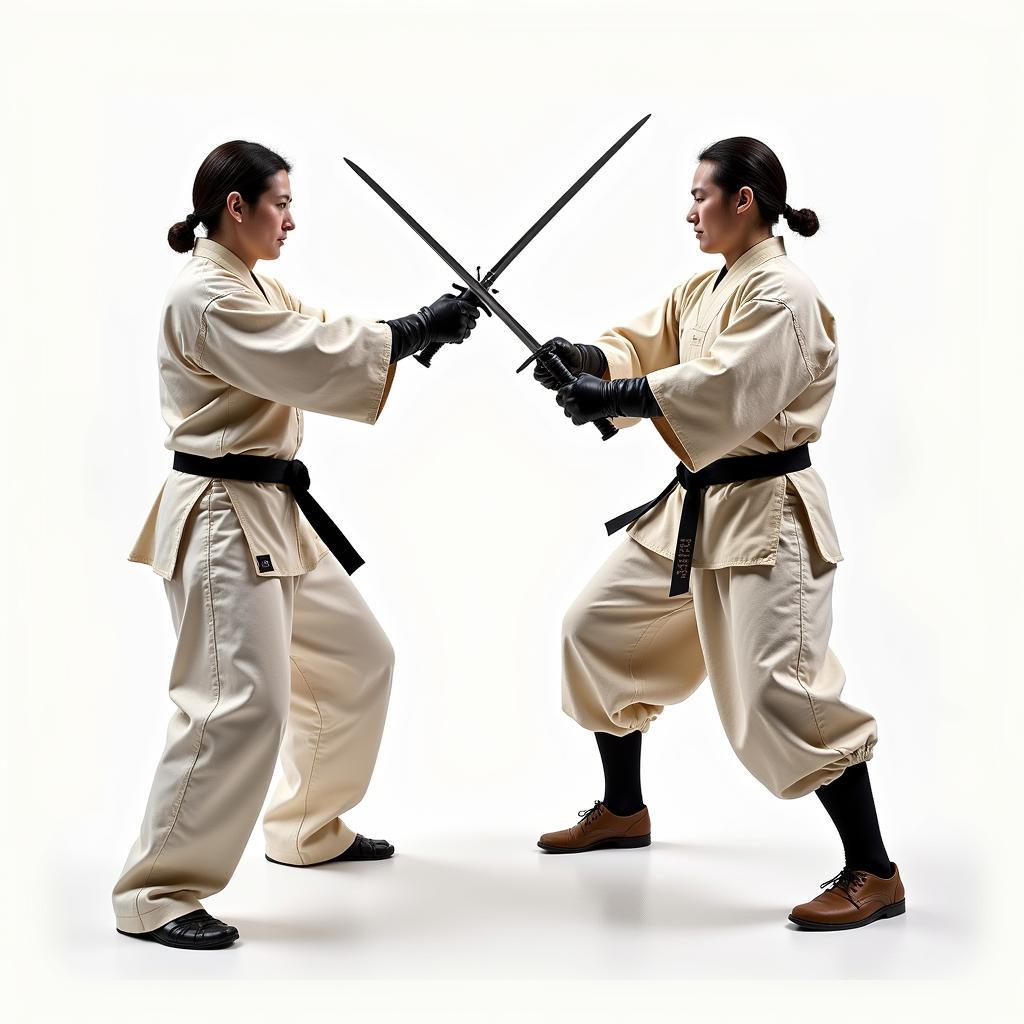The Fighting Saber, a curved, single-edged sword, holds a prominent place in history and popular culture. From the battlefields of ancient times to the silver screen, the fighting saber has captivated audiences with its elegance and deadly efficiency. This article delves into the fascinating world of fighting sabers, exploring their diverse techniques, distinct styles, and rich historical context.
Unveiling the Fighting Saber: A Weapon of Agility and Power
 A Detailed Look at a Fighting Saber
A Detailed Look at a Fighting Saber
Unlike straight swords, the curved blade of a fighting saber excels at slashing and cutting, maximizing damage with each swing. This unique design allows for a fluid transition between offensive and defensive maneuvers, making it a versatile weapon in skilled hands.
Diverse Techniques: From Basic Cuts to Advanced Maneuvers
 Mastering the Grip for Effective Saber Combat
Mastering the Grip for Effective Saber Combat
Mastering the fighting saber requires a comprehensive understanding of its techniques. Beginners typically start with fundamental cuts like the draw cut and the head cut, gradually progressing to more complex maneuvers. These can include:
- Parries and Ripostes: Swiftly deflecting an opponent’s attack and immediately countering with a strike.
- Disarms and Binds: Leveraging the curved blade to manipulate an opponent’s weapon, creating an opening for an attack.
- Footwork and Body Mechanics: Utilizing agile footwork and body movements to gain a tactical advantage in combat.
Styles Across Cultures: Exploring Different Schools of Saber Fighting
 Contrasting Saber Fighting Styles From Around the World
Contrasting Saber Fighting Styles From Around the World
Over the centuries, distinct styles of fighting saber combat have emerged across various cultures, each with unique techniques and philosophies. Some notable examples include:
- European Saber Fencing: Characterized by elegance, precision, and a focus on thrusting attacks.
- Hungarian Saber Fighting: Known for its dynamic footwork, powerful cuts, and emphasis on binding and disarming techniques.
- Chinese Dadao Techniques: Emphasizing powerful chopping motions and utilizing the weight of the blade for devastating strikes.
A Legacy Forged in History: From Battlefields to Popular Culture
The fighting saber boasts a rich history dating back centuries. It has been wielded by warriors, duelists, and revolutionaries alike, leaving an undeniable mark on warfare and cultural identity. Today, the fighting saber continues to captivate audiences through its portrayal in literature, film, and video games.
Conclusion
The fighting saber, with its unique design, diverse techniques, and rich history, remains a captivating weapon. Whether studied for its historical significance or admired for its elegance in popular culture, the fighting saber continues to inspire awe and fascination.
FAQ
What is the main advantage of a fighting saber’s curved blade?
The curved blade excels at slashing and cutting, inflicting more damage with each strike compared to a straight blade.
What are some essential skills for mastering the fighting saber?
Proficiency in fundamental cuts, parries, ripostes, footwork, and an understanding of body mechanics are crucial.
Where can I learn more about historical fighting saber techniques?
Historical societies, fencing clubs specializing in saber combat, and online resources dedicated to historical European martial arts are excellent starting points.
Are there modern applications of fighting saber techniques?
While no longer used in warfare, fighting saber techniques have found new life in historical fencing, stage combat, and fitness programs.
Do you need further assistance? Please contact us at Phone Number: 0902476650, Email: [email protected] or visit us at 139 Đ. Võ Văn Kiệt, Hoà Long, Bà Rịa, Bà Rịa – Vũng Tàu, Việt Nam. Our customer support team is available 24/7.





